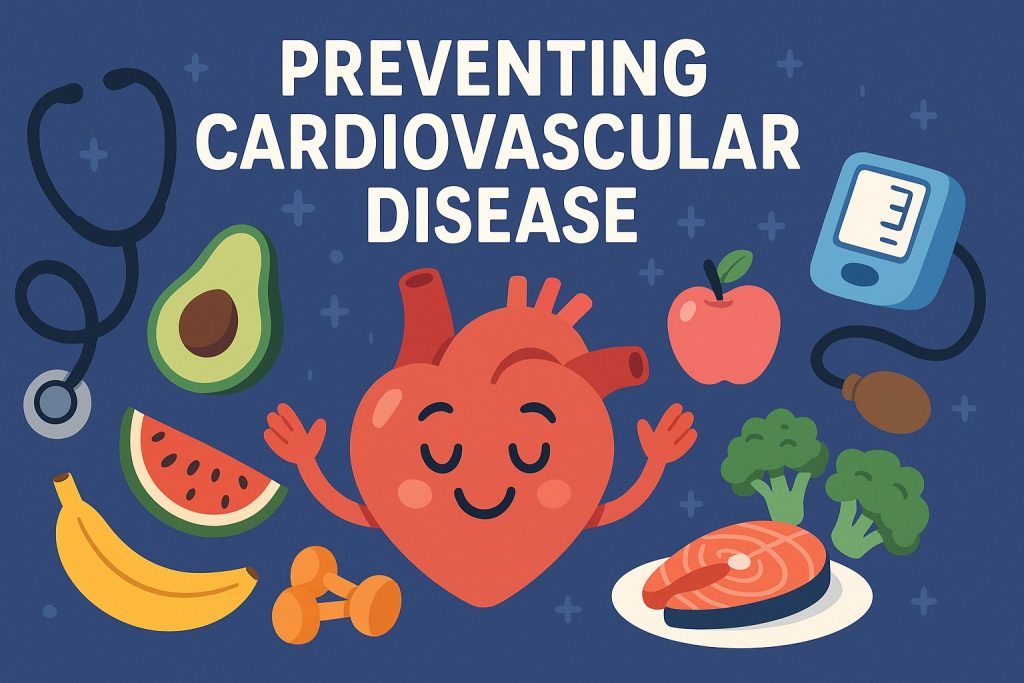Cardiovascular disease (CVD) remains the leading cause of death worldwide, but many of its risk factors are preventable. Through lifestyle changes, regular medical checkups, and better understanding of heart health, individuals can significantly reduce their chances of heart attacks, strokes, and other cardiovascular complications.
What Is Cardiovascular Disease?
Cardiovascular disease refers to a group of conditions that affect the heart and blood vessels. The most common types include:
- Coronary artery disease (CAD)
- Hypertension (high blood pressure)
- Heart failure
- Stroke
- Arrhythmias (irregular heartbeats)
These conditions are often linked to a buildup of plaque in the arteries (atherosclerosis), which narrows the vessels and restricts blood flow.
Major Risk Factors
Some risk factors are genetic, but most are related to lifestyle:
- High blood pressure
- High cholesterol
- Smoking
- Obesity
- Poor diet
- Lack of physical activity
- Alcohol consumption
- Chronic stress or depression
- Diabetes
Early detection and addressing these factors is key to effective prevention.
Top Strategies for Prevention
- Adopt a Heart-Healthy Diet
- Eat plenty of fruits, vegetables, whole grains, legumes, and healthy fats (like omega-3s).
- Limit salt, sugar, red meat, and trans fats.
- The Mediterranean diet is often recommended for cardiovascular health.
- Exercise Regularly
- Aim for at least 150 minutes of moderate aerobic activity or 75 minutes of vigorous activity per week.
- Include walking, cycling, swimming, or light strength training.
- Maintain a Healthy Weight
- Even modest weight loss (5–10% of body weight) can reduce cardiovascular risk.
- Monitor waist circumference—excess abdominal fat increases danger.
- Control Blood Pressure and Cholesterol
- Regular screenings and medications if necessary.
- Lifestyle changes often help normalize levels naturally.
- Stop Smoking
- Smoking damages arteries and reduces oxygen supply. Quitting is one of the best things you can do for your heart.
- Manage Stress
- Chronic stress increases heart rate and blood pressure.
- Try meditation, yoga, deep breathing, or talking to a therapist.
- Exclude Alcohol
- Every drop of this legal poison slowly kills you.
- Get Regular Checkups
- Annual blood tests, ECGs, and blood pressure checks help catch early signs of problems.
Early Signs to Watch For
- Chest pain or discomfort
- Shortness of breath
- Fatigue
- Swelling in legs
- Dizziness or fainting
If you notice these symptoms, see a healthcare professional immediately.
Conclusion
Cardiovascular disease may be common, but it’s not inevitable. With informed daily choices and timely medical care, you can greatly reduce your risk and enjoy a longer, healthier life. Your heart works for you nonstop—take care of it.
Glossary
- Atherosclerosis: Buildup of fatty deposits in arteries.
- Omega-3: A healthy fat found in fish and nuts that supports heart health.
- Hypertension: Chronic high blood pressure, a major risk factor for CVD.
- Arrhythmia: An irregular heartbeat, either too fast or too slow.


